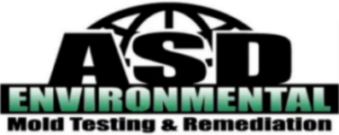Black mold, as the name implies, is often dark in color. When searching for black mold, look for circular-shaped spots that are black, dark green or dark brown. Some black mold can also take on shades of orange or have flecks of white within it. Most of the time, black mold has a slightly furry appearance. Call (910) 399-7764 for testing.
Black mold does not affect everyone in the same way, but those with an allergy or sensitivity to the spores may experience symptoms such as congestion, red eyes, respiratory problems, skin rashes and so on. In some cases, an infection may occur.
Mold is a type of fungus. It is present almost everywhere, including in the air. In general, normal amounts of mold in the environment do not pose a substantial health risk to healthy people with regular immune system function.
There is no single type of mold called “black mold” — many molds are black. When people use the term, they may be referring to a type called Stachybotrys chartarum (S. chartarum), also known as Stachybotrys atra. Therefore, people should remove any mold growth in the home and take steps to prevent it from growing back.
The most common black mold symptoms and health effects are associated with a respiratory response. Chronic coughing and sneezing, irritation to the eyes, mucus membranes of the nose and throat, rashes, chronic fatigue and persistent headaches can all be symptomatic of black mold exposure or black mold poisoning. Call (910) 399-7764 testing for mold.
First things first. Bleach and mold do not mix on surfaces that absorb moisture. Spraying bleach on surfaces can actually contribute to the spread and growth of mold, especially on porous surfaces. You should never try to clean mold off walls. Call ASD for a free estimate for remediation.
- Clothes take longer than normal to dry.
- Clothes are unusually hot to the touch.
- The room is warmer than normal when the dryer is running.
- You’ve noticed burning smells.
- The lint flap isn’t opening.
- The dryer tells you there’s a problem.
- The dryer stops working.
Family members who have respiratory issues such as asthma and allergies can react to dirty or clogged air vents. Allergens circulating throughout the indoor air can trigger an increase in respiratory attacks. Allergy symptoms can include watery or itchy eyes, trouble breathing, and an itchy throat. call ASD to have an air quality test. Also call for free estimate for duct cleaning.
Asbestos is a naturally occurring fibrous silicate mineral. There are six types, all of which are composed of long and thin fibrous crystals, each fiber being composed of many microscopic “fibrils” that can be released into the atmosphere by abrasion and other processes. We can test you home or business for asbestos. We also offer asbestos evaluation for buildings slated for demolition. Call ASD for a free estimate for asbestos testing.
What does asbestos do to the body?
If you breathe asbestos fibers, you may increase the risk of several serious diseases, including asbestosis, mesothelioma and lung cancer. Asbestos exposure may increase your risk for cancers of the digestive system, including colon cancer.
There are no visible signs of radon in your home. It is colorless, odorless, and tasteless, so the only way to find out it’s there is through testing or if you develop symptoms of radon poisoning. Call ASD for a free estimate for radon testing. We also mitigate radon testing as well.
Possible symptoms include shortness of breath (difficulty breathing), a new or worsening cough, pain or tightness in the chest, hoarseness, or trouble swallowing. If you smoke and you know you’ve been exposed to high levels of radon, it’s very important to quit smoking.
- High levels of moisture in the crawl space and or ground water issues/high water table. If you have an open crawl space it is likely you already have moisture issues. Call ASD for free crawl space inspection.
- High Indoor Humidity
- Condensation
- Wood Rot and Floor Joist Problems
- Foundation Cracks
- High Energy Bills
- Signs or Smells of Animals
- Mold and Mildew
What causes a musty smell in a room? The damp, earthy smell of mold and mildew is due to excessive humidity, especially in stagnant places like the bathroom, basement, or laundry room. When mold and mildew build up, they release foul-smelling gases, which permeate textiles like your carpet, curtains, and upholstery.
Water damage is the primary cause of buckling. This can happen when a floor is suddenly flooded with large amounts of water, but it can also occur when moisture content builds up over time in your crawl space. Call ASD for free crawl space evaluation.
Floors can sag for many reasons. a sagging floor may due to damage from water leaks and from pests like termites. Sagging floors may also be due to moisture build up over time and mold damage. Call ASD for a free crawl space evaluation.
Through our testing we can distinguish what types of mold are causing sickness to you and your loved ones in your home. Dirty or clogged air ducts in your home can force those with respiratory issues like asthma and allergies to trigger their underlying health issues. Call ASD for free estimate on testing.
If you are experiencing any of these issues please call ASD ENVIROMENTAL ASAP!





